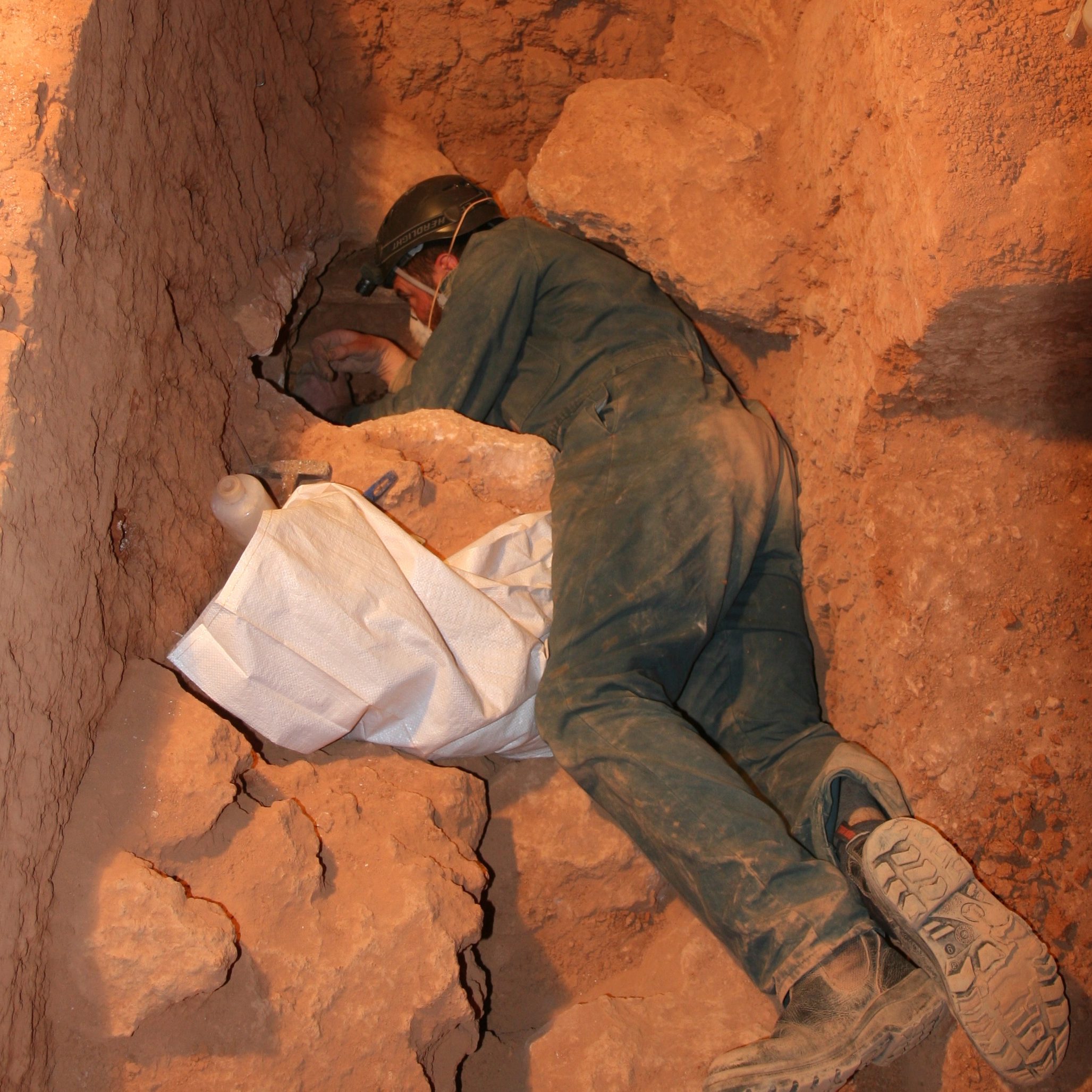Director, Flinders Palaeontology
Gavin Prideaux
I made my first evolutionary “discovery” in the second year of my science degree when I hooked a “lobe-finned fish” from the Port Adelaide River. It was a blenny. Whatever. I always preferred mammals anyway. But discovery rush is an awesome thing, especially when you really do find something that no-one has ever seen or thought possible before.
Over the past 25 years, I have built a broad-based field program in Cenozoic vertebrate palaeontology, excavating at many sites across Australia. I’ve spent a lot of time working in caves. Digging in the dirt for fossils is fun, but it can be just as rewarding, if not more so, to recognise that long-neglected specimens in museum drawers belong to hitherto-unrecognised species, or to collect evidence that overturns prevailing views on extinct animals.
My research explores links between patterns in Australian mammal evolution, extinction, diversity, and environmental change over multiple timescales. We know little about the faunal and environmental history of Australia compared with other continents. My favourite group is the kangaroo family. As the most diverse-ever group of marsupial herbivores, they are ideal for investigating long-term adaptive responses to climatic changes. If a time machine is ever invented and I get to ride in it, I would choose to travel back to a time just before human arrival to see what Australian ecosystems looked like. In the event that this does not occur, I’ll just keep trying to resolve this the hard way.
I am incredibly lucky to have a job where I’m paid to make discoveries about the natural world. But the absolute best part of my job is the opportunities it affords to work with others, learn together and share knowledge. Bringing together people with enthusiasm and complementary skills is an effective way to resolve difficult or controversial problems. Palaeontology is a team game. Any keen bean can play a role, whether volunteer, first-year student, PhD student or professor.
For information about what I’ve learnt, see the Lab Publications page and my Academic Staff page.
For information about what I’m trying to learn now, or might do in the future, please get in touch.
